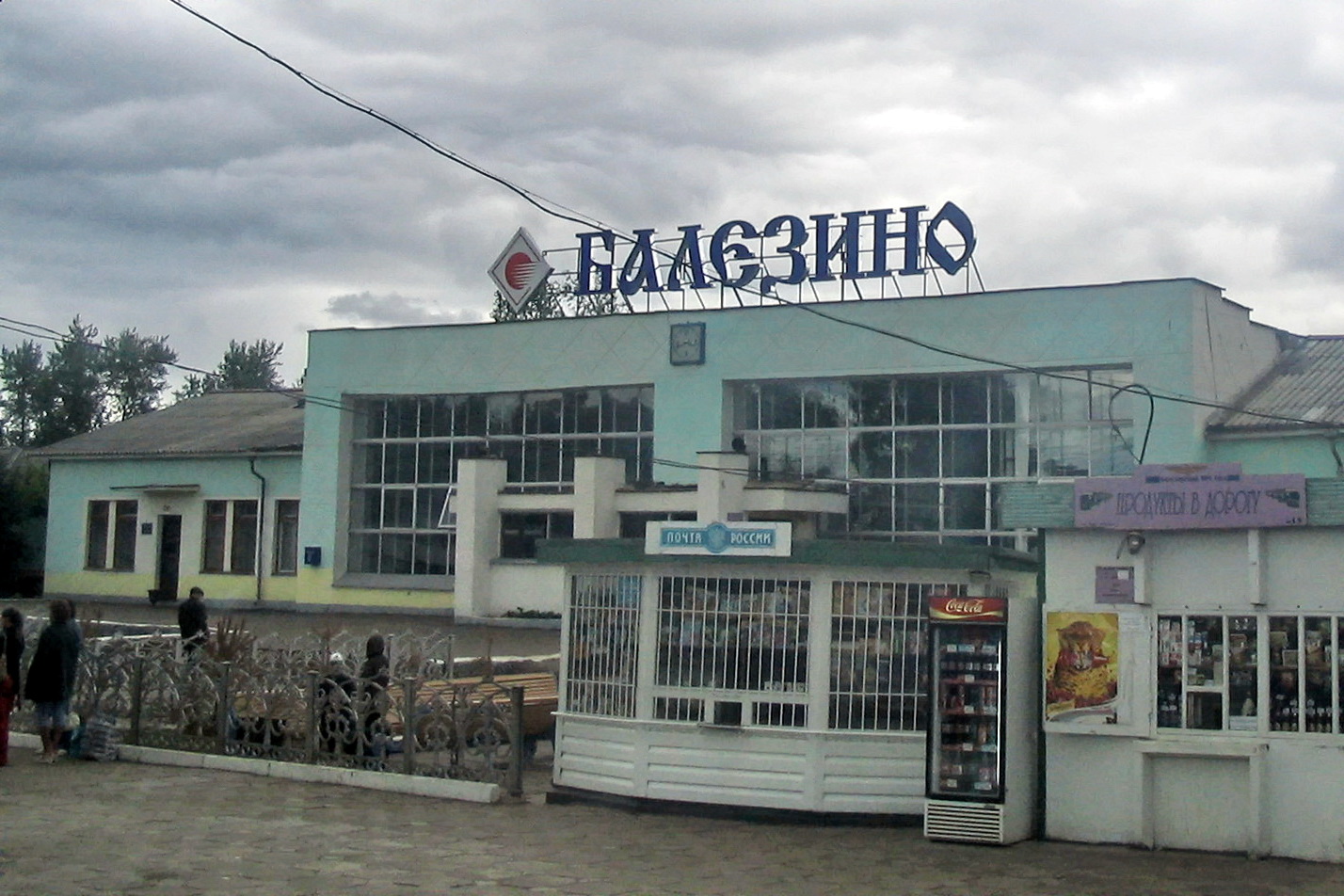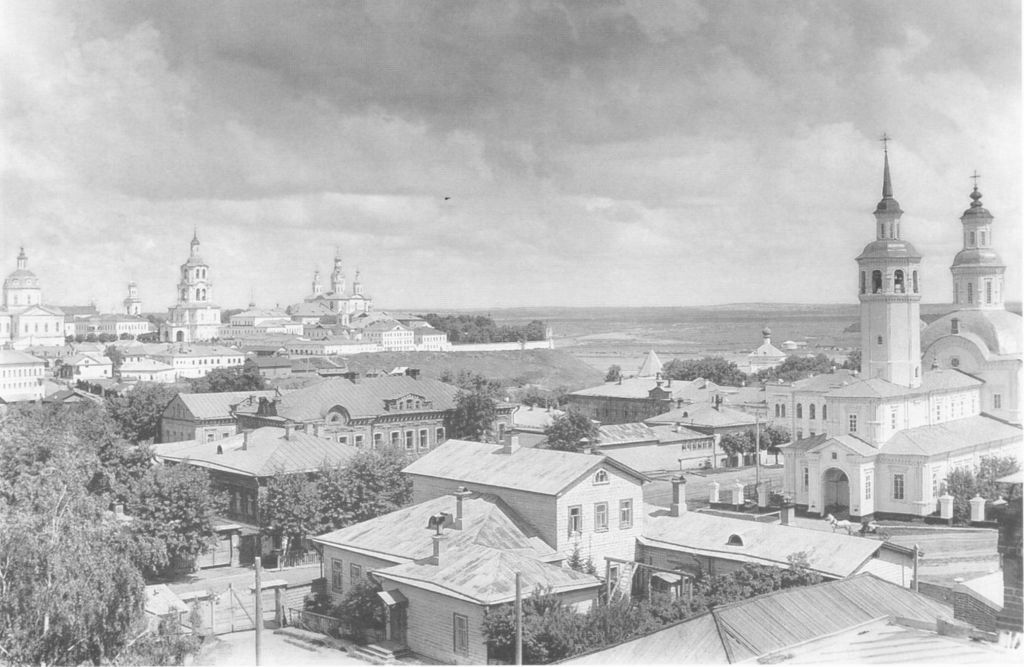|
Balezino
Balezino (russian: Бале́зино) is a rural locality (a settlement) and the administrative center of Balezinsky District Balezinsky District (russian: Балези́нский райо́н; udm, Балезино ёрос, ''Balezino joros'') is an administrativeConstitution of the Udmurt Republic and municipalLaw #73-RZ district (raion), one of the twenty-five in th ... of the Udmurt Republic, Russia. Population: History Balezino had work settlement status until it was demoted to a rural locality in March 2012. Transportation It is an important station of the Trans-Siberian Railway, situated roughly in the center between Kirov and Perm, and is a junction point of 25 kV AC rail line going to Kirov and 3 kV DC line going to Perm. Long distance trains stop for at least thirty minutes at the Balezino station for maintenance, which includes the engine replacement from AC one to DC one. References {{Authority control Rural localities in Udmurtia Glazovsky Uyez ... [...More Info...] [...Related Items...] OR: [Wikipedia] [Google] [Baidu] |
Balezinsky District
Balezinsky District (russian: Балези́нский райо́н; udm, Балезино ёрос, ''Balezino joros'') is an administrativeConstitution of the Udmurt Republic and municipalLaw #73-RZ district (raion), one of the twenty-five in the Udmurt Republic, Russia. It is located in the north of the republic. The area of the district is . Its administrative center is the rural locality (a settlement) of Balezino.Law #46-RZ Population: 38,443 ( 2002 Census); The population of Balezino accounts for 46.6% of the district's total population. Geography Rivers flowing through the district include the Cheptsa, the Kep, the Lopya, the Kama, the Pyzep, the Lyuk, and others. History The district was created on July 15, 1929 by merging Balezinskaya and Yagoshurskaya Volosts of Glazovsky Uyezd. Demographics Ethnic composition (according to the 2002 Census): Udmurt people: 57.6%; Russians: 30.9%; Tatars The Tatars () [...More Info...] [...Related Items...] OR: [Wikipedia] [Google] [Baidu] |
Balyezino Station
Balezino (russian: Бале́зино) is a rural locality (a settlement) and the administrative center of Balezinsky District Balezinsky District (russian: Балези́нский райо́н; udm, Балезино ёрос, ''Balezino joros'') is an administrativeConstitution of the Udmurt Republic and municipalLaw #73-RZ district (raion), one of the twenty-five in th ... of the Udmurt Republic, Russia. Population: History Balezino had work settlement status until it was demoted to a rural locality in March 2012. Transportation It is an important station of the Trans-Siberian Railway, situated roughly in the center between Kirov and Perm, and is a junction point of 25 kV AC rail line going to Kirov and 3 kV DC line going to Perm. Long distance trains stop for at least thirty minutes at the Balezino station for maintenance, which includes the engine replacement from AC one to DC one. References {{Authority control Rural localities in Udmurtia Glazovsky Uyez ... [...More Info...] [...Related Items...] OR: [Wikipedia] [Google] [Baidu] |
Udmurt Republic
Udmurtia (russian: Удму́ртия, r=Udmúrtiya, p=ʊˈdmurtʲɪjə; udm, Удмуртия, ''Udmurtija''), or the Udmurt Republic (russian: Удмуртская Республика, udm, Удмурт Республика, Удмурт Элькун, ''Udmurt Respublika'', ''Udmurt Eľkun''), is a federal subject of Russia (a republic) in Eastern Europe, within the Volga Federal District. Its capital is the city of Izhevsk. Name The name ''Udmurt'' comes from ('meadow people'), where the first part represents the Permic root or ('meadow, glade, turf, greenery'). This is supported by a document dated 1557, in which the Udmurts are referred to as ('meadow people'), alongside the traditional Russian name . The second part means 'person' (cf. Komi , Mari ). It is probably an early borrowing from a Scythian language: or ('person, man'; cf. Urdu ), which is thought to have been borrowed from the Indo-Aryan term ('man, mortal, one who is bound to die'. cf. Old Indic ... [...More Info...] [...Related Items...] OR: [Wikipedia] [Google] [Baidu] |
Types Of Inhabited Localities In Russia
The classification system of inhabited localities in Russia and some other post-Soviet states has certain peculiarities compared with those in other countries. Classes During the Soviet time, each of the republics of the Soviet Union, including the Russian SFSR, had its own legislative documents dealing with classification of inhabited localities. After the dissolution of the Soviet Union, the task of developing and maintaining such classification in Russia was delegated to the federal subjects.Articles 71 and 72 of the Constitution of Russia do not name issues of the administrative and territorial structure among the tasks handled on the federal level or jointly with the governments of the federal subjects. As such, all federal subjects pass their own laws establishing the system of the administrative-territorial divisions on their territories. While currently there are certain peculiarities to classifications used in many federal subjects, they are all still largely ba ... [...More Info...] [...Related Items...] OR: [Wikipedia] [Google] [Baidu] |
Administrative Center
An administrative center is a seat of regional administration or local government, or a county town, or the place where the central administration of a commune A commune is an alternative term for an intentional community. Commune or comună or comune or other derivations may also refer to: Administrative-territorial entities * Commune (administrative division), a municipality or township ** Communes of ... is located. In countries with French as administrative language (such as Belgium, Luxembourg, Switzerland and many African countries), a (, plural form , literally 'chief place' or 'main place'), is a town or city that is important from an administrative perspective. Algeria The capital of an Algerian province is called a chef-lieu. The capital of a Districts of Algeria, district, the next largest division, is also called a chef-lieu, whilst the capital of the lowest division, the Municipalities of Algeria, municipalities, is called agglomération de chef-lieu (chef-lieu ... [...More Info...] [...Related Items...] OR: [Wikipedia] [Google] [Baidu] |
Russia
Russia (, , ), or the Russian Federation, is a List of transcontinental countries, transcontinental country spanning Eastern Europe and North Asia, Northern Asia. It is the List of countries and dependencies by area, largest country in the world, with its internationally recognised territory covering , and encompassing one-eighth of Earth's inhabitable landmass. Russia extends across Time in Russia, eleven time zones and shares Borders of Russia, land boundaries with fourteen countries, more than List of countries and territories by land borders, any other country but China. It is the List of countries and dependencies by population, world's ninth-most populous country and List of European countries by population, Europe's most populous country, with a population of 146 million people. The country's capital and List of cities and towns in Russia by population, largest city is Moscow, the List of European cities by population within city limits, largest city entirely within E ... [...More Info...] [...Related Items...] OR: [Wikipedia] [Google] [Baidu] |
Urban-type Settlement
Urban-type settlementrussian: посёлок городско́го ти́па, translit=posyolok gorodskogo tipa, abbreviated: russian: п.г.т., translit=p.g.t.; ua, селище міського типу, translit=selyshche mis'koho typu, abbreviated: uk, с.м.т., translit=s.m.t.; be, пасёлак гарадскога тыпу, translit=pasiolak haradskoha typu; pl, osiedle typu miejskiego; bg, селище от градски тип, translit=selishte ot gradski tip; ro, așezare de tip orășenesc. is an official designation for a semi-urban settlement (previously called a "town A town is a human settlement. Towns are generally larger than villages and smaller than cities, though the criteria to distinguish between them vary considerably in different parts of the world. Origin and use The word "town" shares an ori ..."), used in several Eastern European countries. The term was historically used in Bulgaria, Poland, and the Soviet Union, and remains in use ... [...More Info...] [...Related Items...] OR: [Wikipedia] [Google] [Baidu] |
Trans-Siberian Railway
The Trans-Siberian Railway (TSR; , , ) connects European Russia to the Russian Far East. Spanning a length of over , it is the longest railway line in the world. It runs from the city of Moscow in the west to the city of Vladivostok in the east. During the period of the Russian Empire, government ministers—personally appointed by Alexander III and his son Nicholas II—supervised the building of the railway network between 1891 and 1916. Even before its completion, the line attracted travelers who documented their experiences. Since 1916, the Trans-Siberian Railway has directly connected Moscow with Vladivostok. , expansion projects remain underway, with connections being built to Russia's neighbors (namely Mongolia, China, and North Korea). Additionally, there have been proposals and talks to expand the network to Tokyo, Japan, with new bridges that would connect the mainland railway through the Russian island of Sakhalin and the Japanese island of Hokkaido. Route descrip ... [...More Info...] [...Related Items...] OR: [Wikipedia] [Google] [Baidu] |
Kirov, Kirov Oblast
Kirov ( rus, Ки́ров, p=ˈkʲirəf, a=Ru-Киров.ogg) is the largest city and administrative center of Kirov Oblast, Russia. It is located on the Vyatka River in European Russia, 896 km northeast of Moscow. Its population was 518,348 in 2020. Kirov is a historical, cultural, industrial, and scientific center of Priural'e (territory on the west side of the Ural Mountains); place of origin for Dymkovo toys; the most eastern city founded during the times of Kievan Rus'. The city also had the names of Khlynov (, from 1457 to 1780), and Vyatka (, until 1934). History Principality and republic The native Slavic tribe of Central Russia and Volga regions, the Vyatichis (also called Viatichi), mixed here with the Novgorod Slavs, Novgorodian Slovenes and Finno-Ugric languages, Finno-Ugric people. According to the medieval chronicles the first Russian settlements in the area appeared in 12th century. Kirov itself was first mentioned (as Vyatka) for the first time i ... [...More Info...] [...Related Items...] OR: [Wikipedia] [Google] [Baidu] |
Perm, Russia
Perm (russian: Пермь, p=pʲermʲ), previously known as Yagoshikha (Ягошиха) (1723–1781), and Molotov (Молотов) (1940–1957), is the largest city and the administrative centre of Perm Krai, Russia. The city is located on the banks of the Kama River, near the Ural Mountains, covering an area of , with a population of over one million residents. Perm is the List of cities and towns in Russia by population, fifteenth-largest city in Russia, and the fifth-largest city in the Volga Federal District. In 1723, a copper-smelting works was founded at the village of ''Yagoshikha''. In 1781 the settlement of Yagoshikha became the town of ''Perm''. Perm's position on the navigable Kama River, leading to the Volga, and on the Siberian Route across the Ural Mountains, helped it become an important trade and manufacturing centre. It also lay along the Trans-Siberian Railway. Perm grew considerably as industrialization proceeded in the Urals during the Soviet period, and i ... [...More Info...] [...Related Items...] OR: [Wikipedia] [Google] [Baidu] |
Rural Localities In Udmurtia
In general, a rural area or a countryside is a geographic area that is located outside towns and cities. Typical rural areas have a low population density and small settlements. Agricultural areas and areas with forestry typically are described as rural. Different countries have varying definitions of ''rural'' for statistical and administrative purposes. In rural areas, because of their unique economic and social dynamics, and relationship to land-based industry such as agriculture, forestry and resource extraction, the economics are very different from cities and can be subject to boom and bust cycles and vulnerability to extreme weather or natural disasters, such as droughts. These dynamics alongside larger economic forces encouraging to urbanization have led to significant demographic declines, called rural flight, where economic incentives encourage younger populations to go to cities for education and access to jobs, leaving older, less educated and less wealthy populati ... [...More Info...] [...Related Items...] OR: [Wikipedia] [Google] [Baidu] |
Glazovsky Uyezd
Glazovsky Uyezd (''Глазовский уезд'') was one of the subdivisions of the Vyatka Governorate of the Russian Empire. It was situated in the eastern part of the governorate. Its administrative centre was Glazov. Demographics At the time of the Russian Empire Census of 1897, Glazovsky Uyezd had a population of 368,587. Of these, 54.7% spoke Russian language, Russian, 41.6% Udmurt language, Udmurt, 2.1% Tatar language, Tatar and 1.5% Komi-Permyak language, Komi-Permyak as their native language. References Glazovsky Uyezd, Uezds of Vyatka Governorate Vyatka Governorate {{Russia-gov-stub ... [...More Info...] [...Related Items...] OR: [Wikipedia] [Google] [Baidu] |


_(10004827914).jpg)


